Judging Leaders: Today’s Lenses for Evaluating Leadership
By Bruce Griffiths
The current global pandemic has resulted in an extraordinary need for strong leaders. Citizens in every city, state, and country are desperate for direction and hope. Those of us in the leadership business find ourselves immersed in a remarkable living leadership laboratory.
Television, social media, and radio are replete with interviews across a variety of former and current leaders. Pundits are asked to examine what’s needed to successfully lead us out of this pandemic. Most of this examination, however, is anecdotal and diffuse.
In the academic and business worlds, leadership does in fact have a body of research and science to inform thinking and evaluation. Let’s look at leadership through a number of lenses including a research-based approach.
Leaders Across Time
One popular lens that historians use to evaluate how good or bad a leader was is to look back and ask, “Did the times make the leader, or the leader make the times?” In our opinion it’s both. In the USA we can be grateful that George Washington, Abraham Lincoln, and Franklin Delano Roosevelt were at the helm as we weathered the birth of our nation, a civil war, and then a depression and a World War. If you look closely you’ll see that they were already good leaders who were then catapulted to the front page by dramatic events. They all tended to be composed, clear communicators, who accepted their responsibilities and developed agendas that inspired hope and provided direction. For another President, Harry Truman, the sign on his desk read “the buck stops here.” This underscored his acceptance of responsibility. FDR’s fireside chats highlighted his communications skills as he built a national agenda, first to recover from the depression and then to save the world for democracy. It’s true that tough times test leaders,but truly great leaders tend to be those who leverage their existing skillsets to accomplish extraordinary things.
We will show how all of these skillsets -strategist, communicator, and collaborator- are parts of a competency model that specifically identifies the components scientifically demonstrated to be marks of good leadership.
The Leadership Competency Model
Since the 1950’s behavioral scientists have been identifying and validating the variables needed to lead and manage. Nomenclature has shifted over the years from calling each factor a “variable,” or a “dimension,” or the “knowledge, skill or ability,” to the more popular contemporary term “competency.” But no matter the label, for more than 70 years science has established incredibly consistent factors that define good leadership. Competencies like Communications, Problem Solving, Organizing & Planning, Relationship Building, and Influence/Persuasiveness are still present in current models and still predict success as a leader; they continue to provide a valid, and clear, lens through which to differentiate current leaders. Do you trust the leader (Relationship Builders – open, honest, accessible, consistent, reliable)? Do they communicate clearly and frequently (Communicativeness – articulate, clear, calm, and focused in the right medium at the right time)? Do they have good judgement (Problem Solvers and Decision Makers – fact based, inclusive, divergent thinkers that can collaborate)? This common competency language for organizational leaders has proven itself over decades as a best practice in how to evaluate who should lead and how they might improve to be the best leaders they can be.
Mindsets and Expectations
Social scientists have long known, and demonstrated, that expectations can color outcomes. Take the famous quote in the classic play, My Fair Lady, that “the difference between a flower girl and a lady … is how she is treated” underscores the need for positive expectations, by Professor Henry Higgins in this case, to produce positive outcomes. Leadership research has revealed that several of these mindsets are prerequisites for truly exceptional leadership.
A belief that people are basically good, that the world is abundant, and that a collaborative approach is best, are all fundamental to better decisions and more motivated followers; they are fuel for good leadership.
All these mindsets combine to automatically motivate a skillset, like being a good listener. Just learning the behaviors associated with listening will fall short. One needs first to explore values and assumptions. For example, does the leader listener have positive assumptions about the person being listened too; does the listener truly value consensus decision making; is the listener worried about competition from them? These beliefs either motivate, or hinder, authentic listening. The person speaking will readily detect genuineness in the listener, especially from non-verbal cues.
Skillsets must be demonstrated, but points of view are how the best leaders first frame the world. These leader first zoom out and approach others by believing:
1. People Are Good
Exceptional leaders believe that people are basically good, and they do want to contribute and do well, versus a belief that people are naturally lazy and need constant supervision. They know that expectations, both positive and negative, can influence outcomes.
2. They Can Make a Difference
Exceptional leaders believe that they can make a difference, not that life is determined by luck and powerful others. They know that there are forces and people they can’t control, but in the end they believe in themselves and their ability to influence the world.
3. Collaboration
Exceptional leaders believe in collaboration as a default approach to problem solving. They trust in consensus decision making. They are naturally inclusive. They know that collaboration improves both the quality of decisions (they get more information) and commitment (through more involvement) to those decisions.
4. The World is Abundant
Exceptional leaders believe there is plenty to go around versus a need to compete for scarce resources, and win in every arena. Their belief in an abundant world comes from a combination of self-confidence and humility. It is grounded in a belief that there is more than enough for everyone. They know that the opposite mindset, that the world is scarce, is more destructive and that thinking there will never be enough, results in feelings of fear, stress, and anxiety. An abundance mindset leads to a win-win attitude with others.
It is true that not every competency needs a pre-requisite mindset, but some of the most important do.
Source of Power
Another more nuanced look at true leadership also comes from the world of organizational psychology. It looks at how leaders empower themselves. Do they rely on the organizational authority delegated to their roles? Or are they personally powerful? Are they powered by the integrity of their legitimate agenda, their communications skills, their honesty and their expertise?
The blunt approach to leading is simply to rely on rewards and punishments to control the behavior of followers. This transactional approach assumes follower compliance through fear of punishment (I’ll lose my job) or promise of reward (I’ll get a bonus). These incentives are always available, but true leaders first persuade others through their personal integrity, persuasive message, and expertise (or access to it). These are the personal factors that genuine leaders employ to advertise their agenda and get commitment to it.
It’s often said that managers rely on positional authority to gain follower compliance, whereas leaders rely on personal power to gain commitment.
One final note on power. The renowned Harvard psychologist, Dr. David McClelland, discovered three needs in all of us (1) to achieve, (2) to be liked (for affiliation), and (3) for power. He correlated a stronger “power” need in those percolating to leadership roles at the top of organizations. The motivation seemed essential to energize leaders, but he warned against selecting those individuals who sought power for its own sake. Power can corrupt, and without the associated need to achieve, and a positive agenda, organizations can wind up with despots in charge.
Leadership is About Agendas
Lost in much of the current discussion about how world leaders communicate, collaborate, or make decisions is the WHAT they focus on – the agenda they espouse. This is sometimes overlooked as a point (maybe THE point) of leadership. Having the competence to lead, but without an agenda just makes you an “influencer”, NOT a leader. And of course a leader’s agenda is not only the destination, but also includes the rules of the journey. For true leaders, both ends and means matter.
One of the most famous examples from history is Mahatma Ghandi, who led the Indian resistance against British colonialism and eventually helped India achieve independence. His agenda was clear: “home rule” achieved non-violently. Both ends and means were crystal clear to his followers and modeled daily by Ghandi. Indeed, many of the strategies and tactics that Martin Luther King employed in his civil rights movement decades later were founded on the leadership of Ghandi.
In the sometimes confusing conversation dissecting why we think some leaders are better than others (their traits, values, competencies, etc.), we forget that as followers we line up primarily because of an AGENDA: a purpose that’s clearly communicated, compelling, and legitimate. A convincing and charismatic communicator can build a cult, but discerning followers will seek a proactive agenda from their leader that results in a general benefit, and seeks to prevent harm while getting there.
In sum, once the pandemic has passed and history nominates new faces for Mount Rushmore we’re willing to bet it will be those leaders who took responsibility for a legitimate agenda; communicated that agenda clearly, personally, and passionately; collaborated to make fact based decisions; and provided a hopeful vision.
What Does A Great Leader Look Like?
If you’re asking yourself “Am I looking at a great leader?” you can look through the lenses of social psychology research and ask these questions:
Personally Powerful
- Does this leader rely on personal integrity, strong consistent communications, and expertise (self or staff of experts) to persuade?
- Does this leader enthusiastically communicate an inclusive agenda?
Competent
- Is this leader competent as a leader and manager? Namely is this leader a good communicator, decision maker, planner, relationship builder, strategist?
- Does this leader value competence? Is competence apparent in self and staff?
Mindsets and Beliefs
- What does this leader believe is true?
- Do they believe people are basically good? That the world is abundant? That they can make a difference?
- Do they think win-win in decision making?
- Or does their behavior seem to reflect a negative belief system? Are they reactive and prone to shun responsibility?
Agenda
- Does this leader have a legitimate agenda and take personal responsibility for it?
- Is this leader proactive in developing agendas during challenges and turbulence?
- Does this leader’s agenda include a strong, personal, moral compass? Is this leader’s agenda driven by values?
Across Time
- Does this leader have the right stuff (as defined by the above) to lead in truly challenging circumstances?
- Does this leader have the self-awareness to recognize shortfalls and the skills to enlist needed experts to navigate turbulent times?


